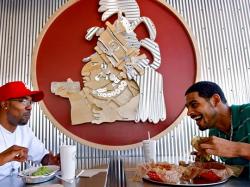Consumers Are Expanding Their Definition Of Fast Food
January 14, 2010 | 3 min to read

CHICAGO — Consumers perception of fast food is no longer confined to quick-service, drive-thru restaurants and convenience stores. Instead, a dual concept has emerged, consisting of traditional fast food, and of food fast, served quickly with a greater emphasis on flavor, quality and ambiance. A significant percentage of consumers (41 percent) are reporting that their idea of places offering fast food has expanded recently to include fast-casual restaurants such as Panera and full-service restaurants offering carryout and curbside service. As Americans continue to trade down from full-service concepts, more restaurants are competing for the fast food/food fast customer, says Darren Tristano, EVP at Technomic, a foodservice industry consultant. Both quick-service and fast-casual restaurants are borrowing elements from the other to drive traffic. This represents a host of challenges to operators rethinking their brands. Understanding consumers changing perceptions of fast food, as well as competitors responses, will be central to success.
The findings are part of Technomics Status and Future of Fast Foods: Consumer Trend Report, which looks at how consumers are seeking faster, more convenient service from all types of foodservice establishments, including convenience stores, food trucks and grocers offering retail meal solutions. Some trends examined in this report include:
Upscaling in limited-service restaurant formats: the development of bustling social settings within contemporary interior spaces;
Introduction of price-driven value elements into fast-casual restaurant menus;
Broadening of full-service restaurants service formats to include convenience-oriented platforms like call-ahead and text/online ordering, home delivery and curbside pickup.
Appearance in big-city markets of revitalized food trucks, offering upscale and gourmet street food.
Other select findings include:
Nearly half of consumers (49 percent) say they eat at fast-food restaurants at least once a week; about one fifth of consumers said the same for fast-casual (16 percent) and full-service (20 percent) restaurants.
One out of four consumers (24 percent) say theyve increased their visits to fast food restaurants in the past year, higher than for any other restaurant segment.
Roughly half of consumers (52 percent) say that a fast-food meal should be delivered within five minutes; consumers are willing to wait somewhat longer for items they perceive as food fast.
About a third of consumers say they would like to see dedicated take-out areas at fast-food (32 percent) and fast-casual (33 percent) restaurants.
Efficient ordering and carryout options at full-service restaurants have strong appeal. Call-ahead ordering for pickup, separate take-out stations, and curbside service interest 40 percent, 37 percent and 31 percent of consumers, respectively.
The Status and Future of Fast Foods: Consumer Trend Report was designed to assist foodservice operators and suppliers in understanding consumer perception and patronage of fast-food and food-fast concepts, and to provide a consumer-oriented account of the status and future of fast foods. It identifies specific opportunities and implications tailored to help restaurant operators facilitate long-term planning and growth.
Based on data from a November 2009 survey of 2,000 consumers, the report integrates industry data from the Top 500 U.S. restaurant chains, select secondary sources and menu analysis from Technomics proprietary MenuMonitor database. Appendices include menu and concept profiles of 10 innovative food-fast concepts, and comprehensive demographic breakdowns for fast-food and fast-casual restaurant user groups and consumer clusters.
Also available is a forward-focused Strategic Category Assessment and Opportunity Module. Developed from discussions with leading restaurant chains, emerging concepts and industry experts, the module focuses on short- and long-term trends and strategic and operational changes that will assist fast-food and food-fast operators in establishing and maintaining competitive advantage.
To purchase or learn more about this report, please visit www.technomic.com or contact one of the individuals listed below.
Source: Technomic Inc.
